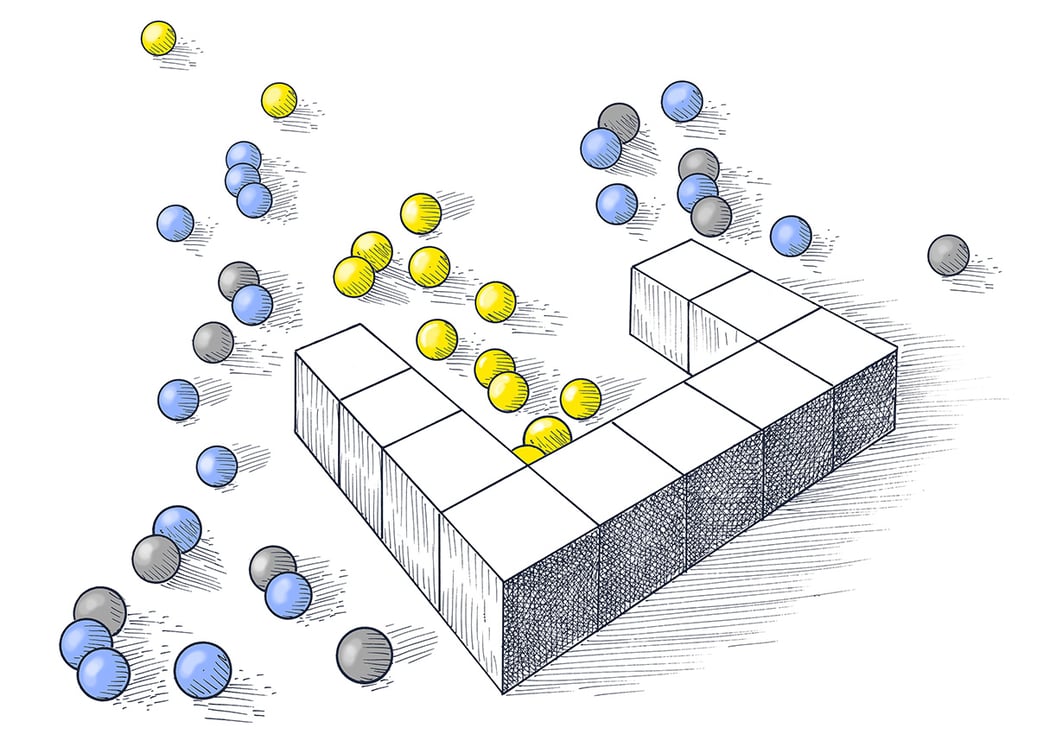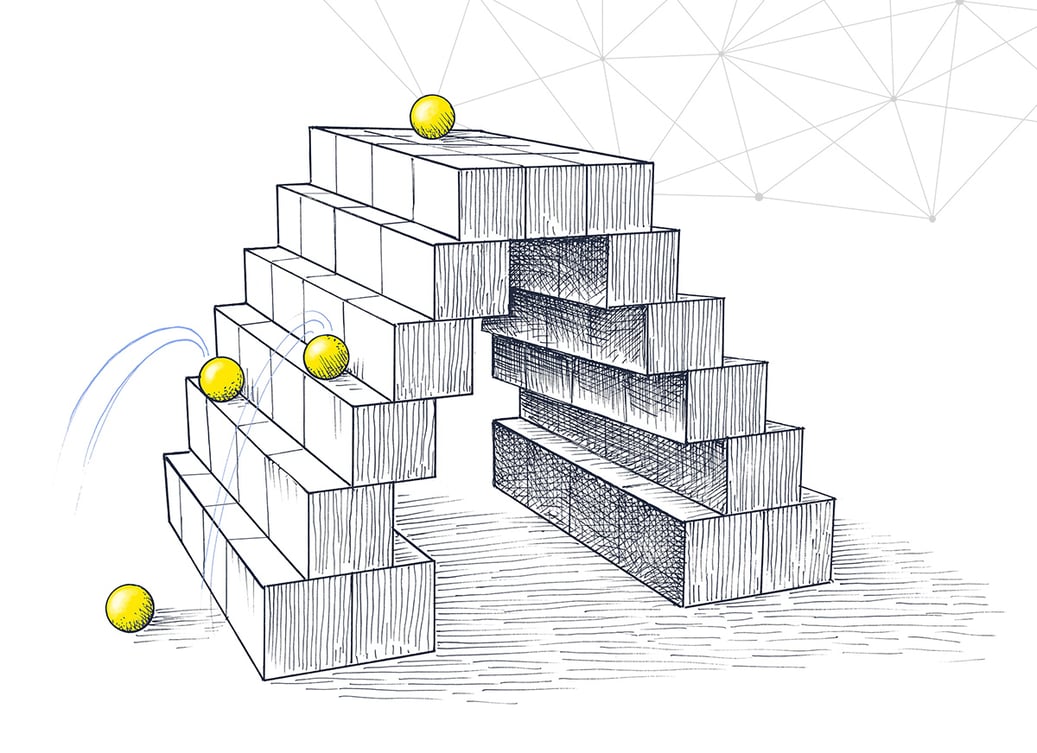Peter Drucker proclaimed, “There is only one valid definition of business purpose: to create a customer.”
Mr. Drucker is wrong.
The only valid definition of a business’s purpose is to create value. For many, a business’s revenue from selling to customers is one of the results of that value, but it isn’t the sole purpose of a business.
The creation and exchange of value from customers, employees, and the greater community in which our businesses exist determines what a company is.
What goods or services your business provides does not matter. Instead, it is the alignment of resources to create continuous value through our businesses that matters — value to your employees, to your customers, and your community. Therefore a company has one purpose for three aligned audiences.
There is only one practice that addresses the alignment of organizational resources for the benefit of those three audiences: Revenue Operations.
Revenue Operations isn’t a siloed function of sales or executives or a recurring revenue model. It’s not a software program or a new form of Chief Operating Officer. Instead, these are convenient lies brought to you by software companies, buzzy sales training programs, and COOs looking for overdue reinvention.
If the business exists to create value, Revenue Operations creates organizational alignment between all stakeholders to accelerate a cycle of value generation.
Eight foundational truths of Revenue Operations alignment are required within your own company to create a cycle of value creation: building a foundation, growing from that foundation and business expansion.

Build the foundation
Building a foundation of value for your business requires clearly defining who your business serves, its positioning, your stakeholders and your communications platform for attracting and converting stakeholders to your company.
#1 Not everyone is your customer, nor should they be
You must stop believing your business serves everyone.
You must also stop thinking that everyone your business serves is like you.
No one business successfully serves all humanity. You don’t need to look too far to find unhappy customers of organizations that serve broad populations — they are called governments.
Most businesses don’t fall into the same customer-base category as governments. However, over time one of two things happens. A focused company will develop a profoundly narrow definition of its ideal customer, or it will fall prey to customer-creep. Customer-creep happens when a well-intentioned growth-minded firm will add adjacent opportunities over time in the name of revenue without reviewing and refining their definition of an ideal customer. Like an outdated eyeglasses prescription, the image of that customer becomes fuzzy to the company. Suddenly, though this doesn’t happen overnight, you will realize that your customer turnover rate has increased, along with your customer acquisition cost. Customer satisfaction decreases — but you don’t know why.
It’s because you have lost sight of the customer. While trying to serve everyone, you are helping no one. Your business doesn’t suit everyone.
Your customers are also not like you. Yes, you may have been the customer in the beginning. Maybe as your company’s founder, you brought to market a solution to a once-personal problem that now serves many. But, over time, the distance between yourself and the customer increases. Life is in flux, and you are not static. Neither are your customers: their needs, tastes, sources of information change.
Instead, you are a detective, constantly studying your customers. If you took an active observational approach to your customers in the first place, your business wouldn’t have ended up trying to serve everyone.
At the heart of Revenue Operations is the practice of people first, not revenue. When you create a customer-centric organization, revenue follows.
The first key to creating a value cycle is to deeply understand your customers, define your ideal customers, and focus only on serving value to those seeking value alignment with you.
#2 You serve stakeholders, not shareholders
You believe that your business stakeholders include people within the organization and outside of it: employees, customers, and the larger community.
RevOps depends on the alignment of your organization’s resources to create value for those it serves. Now that you have clearly defined who your customers are, you have to define the other stakeholders to bring into that alignment: internal members of your organization and external community members.
Internal stakeholders include leadership, management, staff, board members, and advisory roles — consultants, partners, etc. For generational family businesses, the continuation of the family firm is an internal stakeholder.
External stakeholders include the larger community in which your organization operates. For the hyperlocal organization, it could be geographically defined. For a mission-driven organization, such as a B-Corp or other like entity, it could be a larger population such as communities in Africa accessing clean water or women entrepreneurs looking for venture capital. Finally, your community could be defined as your company’s industry. There is no right or wrong answer when determining your external stakeholders provided you look beyond limiting your mission to the service of extracting value from customers.
#3 For you, marketing is about giving value freely
You make scheduled, reliable deposits of value to your stakeholders through marketing to increase your business’s future available withdrawal balance.
You wouldn’t walk up to a stranger and ask them to marry you at the bar. Or at least I hope you wouldn’t without first buying them a drink. Maybe dinner.
For many, marketing and sales are a lot of proposals to strangers in bars. Not only does this not work, but for those that do, they often end abruptly in divorce.
Marketing is not the act of consistently making asks. Marketing is the act of providing value to form a relationship between your organization and your ideal customer, so you have the opportunity of requesting it from the customer in the future. Marketing isn’t an overnight fix, a switch to flip, an eleventh-hour effort. If you believe that, you will never grow your business beyond a small circle of influence. I feel so firmly in this that if you believe marketing is the flip of a switch, I think it’s safe to say that your business will die a slow, painful death of employee and customer turnover. So get your affairs in order.
Marketing is the part of the business that requires a little faith. It’s belief in the uncertain. But, like the stock market or the lottery, in RevOps, you have to create future returns by participating. Participation can take many forms — newsletters, articles, workshops, webinars, demonstrations, surveys, videos, podcasts, interviews, etc. The format your marketing takes matters little compared to the value it provides to your stakeholders.

Grow
Growing your foundation to create value in your business is an inside-out job. Fine-tuning your internal teams creates organizational alignment and reduces inefficiencies through automation.
#4 You leverage internal marketing to create external value
Aligned internal teams are the organization’s customer’s first and strongest advocates
The health of your internal customers, your employees, and supporting management shows the true character of your company’s culture. Is everyone worried or reassured? Are you seeing a drop in quality or productivity from your team, or are they thriving? Are you worried your team is going to explore employment elsewhere? What keeps you up at night about your employees?
Your internal stakeholders are the company’s first customers. Your leadership, management, and staff at all levels are at the heart of your organization. Without that core, alignment with your customers and communities can not happen. Revenue Operations happens from the inside out.
Shaping a culture within your company requires internal marketing. Culture isn’t a buzzword if it retains your top talent, attracts ideal candidates to your organization, and creates frictionless energy that propels your company forward toward its mission and vision. Culture is an environment that retains exemplary company ambassadors who attract like-minded people motivated and fulfilled by delivering value to your customers.
Because Revenue Operations is a practice of value alignment, by addressing redundancies and friction points between teams and within job functions, the cycle of value serves employees to increase job satisfaction and efficiencies that are ultimately felt by your company’s customers and other external stakeholders. Turning the wheel velocity toward measurable revenues.
#5 You slow down to speed up
You resist the temptation to grow before systems of scale are in place.
With your ideal customers and internal teams in alignment, the urge to scale can feel tempting. The momentum of your value cycle is beginning to show results. Things are starting to go well. Customer and employee satisfaction is higher, so is retention. So you begin making withdrawals from the bank of value you’ve built up over time with prospective target customers.
At first, it goes well; everyone internally is excited about the growth opportunities. The first few customers are happy too. However, you are using the same systems, technologies, and methods before this new growth. Now the system you built is feeling some pressure. Internal team excitement turns into resentment as they begin to feel overwhelmed. You react and hire more staff. But your current staff doesn’t have the time to train the new team to provide relief. Customer satisfaction starts to slip; complaints creep in from external stakeholders now. You lose some of those hard-won customers. Loyal customers feel ignored, and now you lose a few of them as well. You feel like you are back where you started.
As soon as things start to feel stable, moving to scale jumps your organization off the value cycle track. Your team is suddenly out of alignment with your customers, and your customers feel it and react accordingly.
RevOps alignment requires slowing down to address internal systems and processes for scale before you speed up. By connecting systems and technologies, making them work together to cut out manual processes, and reduce redundant tasks, you’re putting your work in on the front end and watching the fruits of your labor as systems organically flow data and processes from one to the other.
#6 You copy to innovate
You seek reimagined ideas from others by bringing diverse groups together to create innovative stakeholder experiences.
Our culture places value on individual experiences and achievements. From scientific breakthroughs to new products on the market, we are taught to seek and celebrate the new from a young age. But in business, first doesn’t necessarily mean profitable. As a result, 97.8 percent of the value of new innovations doesn’t go to the originator. Instead, the market rewards the imitator.
Some of the best-known industry disruptors are imitators who brought known applications together from unrelated industries: Airbnb, Uber, Amazon are all examples of disruptive industry innovators. None of these companies invented anything new; instead, they brought new customer experiences to known industries.
Most businesses tend to think of customer experiences as surface level. However, 86 percent of buyers are willing to pay more for a great customer experience. Why? Because great experiences are more valuable. Revenue operations is intrinsically value-focused. By providing high-value experiences, in the cycle of value, the downward force created by vocally happy customers isn’t the only payoff. Customer experience for your internal stakeholders — management and employees — results in the same positive downward flywheel effect.

Expand
From buildings to businesses, great achievements are only realized through the lens of a single source, a blueprint. Imagine if every craftsperson was building to a different set of plans or using if your car was assembled using different sets of instructions. The result would be less than expected. Growing robust un-siloed reporting requires a single source of data. Expanding your value is leveraging this data across the entire organization.
#7 You use transparency to create accountability
You implement a single source of truth from which the entire organization can align without silos.
Everyone has experienced the collateral damage that results from siloed operations. As consumers, we don’t see separated departments when interacting with a company. Employees represent the company as a whole, not just a part. From that single point of view, the customer expects a seamless experience. Nothing is more off-putting than retelling vital information over and over to a carousel of customer service representatives.
Siloed difficult-to-use business systems complicate the experience for the customer and the employee. According to market research firm IDC, companies lose 20 to 30 percent in revenue every year due to inefficiencies. Captured inefficiencies alone would add profit margins most companies would be thrilled to achieve. What would you do with 20 or 30 percent more profit?
Alignment around revenue begins with creating a single source of truth for all teams. The cycle of value creation resulting from RevOps is the elevation of your team to perform at higher levels, maximizing their finite time resources to be applied in meaningful ways rather than wasting time on repetitive, tedious tasks. Suppose your team was the astronauts in space. In that case, RevOps sits with you back at mission control, informing decisions, reducing redundancy, and providing data from a single source toward a shared mission.
#8 You measure data not by inputs and outputs but by the value created
You manage from a data-driven, transparent, single source of truth — with value context.
You know the numbers don’t lie. But, unfortunately, you also know they don’t always tell the truth.
Imagine driving a car. The gauges on the dashboard give you the information in real-time — mileage, speed, gas, or battery-charge levels. The dashboard is worthless if the meters are inaccurate or mislabeled. The same goes for the data used and measured to run your organization. Now imagine trying to drive the car with only some of the gauges or none at all.
Now imagine that car as your first car. What was that car’s value to you? Was it the sticker price? Or was the value the freedom it gave you?
When we anchor to value as an organization, the perpetuation of participation trophy-ism ceases to exist. Our organizations do not exist to simply — exist. As established, they exist to create value.
If you are unable to measure that value, do you exist? What is the point?
When we stop measuring our worth by widgets, we move the conversation away from inputs and outputs to impact and value. It’s not the number of widgets sold; it’s the value those widgets created. Value-driven KPIs motivate teams and retain employees. The same KPIs result in raised value-driven prices driving actual revenue. Value-aligned customers and communities remain actively engaged with the organization. This is the pinnacle of achievement with Revenue Operations.
Peter Drucker was wrong. A business’s purpose has nothing to do with creating customers. It has everything to do with creating value, resulting in customers.
 Illustrations by John Gummere
Illustrations by John Gummere


